Contents
- 1. HOTELS & ACCOMMODATIONS
- 2. STONE HOUSE STAY
- 3. GOGI GUKSU
- 4. KOREAN BBQ IN JEJU
- 5. DONGMUN MARKET
- 6. WOLJEONG RI BEACH
- 7. HAMDEOK BEACH
- 8. CAFES
- 9. MAKERAL KIMCHI STEW
- 10. HANDAM COASTAL WALK
- 11. HYEOPJAE BEACH
- 12. BIYANGDO
- 13. TRY SOME DIFFERENT SEAFOOD DISHES
- 14. EONGAL COASTAL TRAIL
- 15. YEONG MEORI COAST
- 16. OLLE TRAILS
- 17. YAKCHEONSA TEMPLE
- 18. YEOMIJI BOTANICAL GARDEN
- 19. OLLE MARKET
- 20. GARLIC FRIED CHICKEN at OLLE MARKET – (Manong Chicken)
- 21. MARADO
- 22. SEONGSAN ILCHULBANG
- 23. GALCHI
- 24. UDO ISLAND
- 25. EATING HORSE MEAT
Contents
- 1. HOTELS & ACCOMMODATIONS
- 2. STONE HOUSE STAY
- 3. GOGI GUKSU
- 4. KOREAN BBQ IN JEJU
- 5. DONGMUN MARKET
- 6. WOLJEONG RI BEACH
- 7. HAMDEOK BEACH
- 8. CAFES
- 9. MAKERAL KIMCHI STEW
- 10. HANDAM COASTAL WALK
- 11. HYEOPJAE BEACH
- 12. BIYANGDO
- 13. TRY SOME DIFFERENT SEAFOOD DISHES
- 14. EONGAL COASTAL TRAIL
- 15. YEONG MEORI COAST
- 16. OLLE TRAILS
- 17. YAKCHEONSA TEMPLE
- 18. YEOMIJI BOTANICAL GARDEN
- 19. OLLE MARKET
- 20. GARLIC FRIED CHICKEN at OLLE MARKET – (Manong Chicken)
- 21. MARADO
- 22. SEONGSAN ILCHULBANG
- 23. GALCHI
- 24. UDO ISLAND
- 25. EATING HORSE MEAT
Jeju Island is packed full of breath taking natural wonders. So much so that it’s been crowned as one of the seven natural wonders of the world. It’s perfect for chill weekend getaways, romantic honeymoons, and even has activities for the action seekers. The most prominent feature seen all over the island is a dormant volcano nestled in the center called Hallasan. It formed the island in pre-historic times and has left the shores covered with jagged black volcanic rock formations.
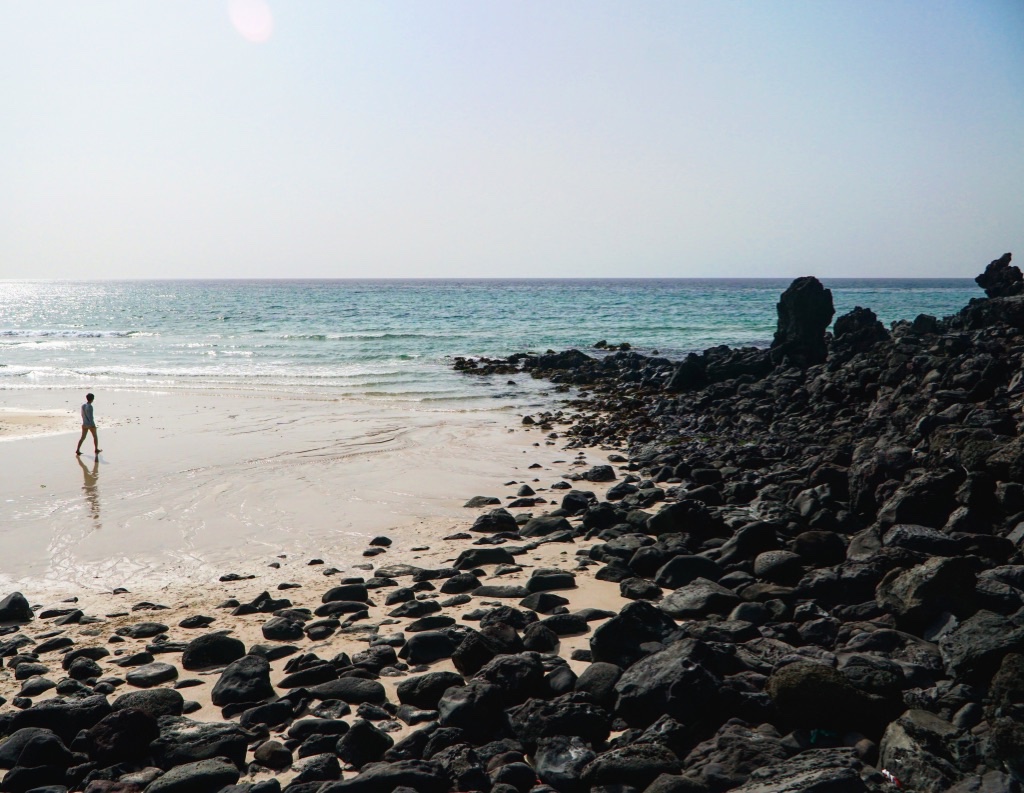
The volcano has also left expansive cave systems and oreums (translated to parasitic cones), there are hundreds of these mini mountains speckled all over the island and are great for hiking. Countless gorgeous beaches outline the island’s perimeter along with waterfalls that are hidden in cliffs as well. These are just some of the natural features.
Jeju Island also hides a subculture of South Korea that is significantly different from the mainland. Some of the distinguishing features of the island’s culture is a shamanistic religion, haneyo (female free divers) and the vastly different dialect of Korean language it’s locals use. All of these wonderful and unique cultural rarities can be found on the Jeju Island. The list that i have composed should help you develop a plan for a short Jeju Island visit, a longer stay or may even inspire some locals to explore more of the island.
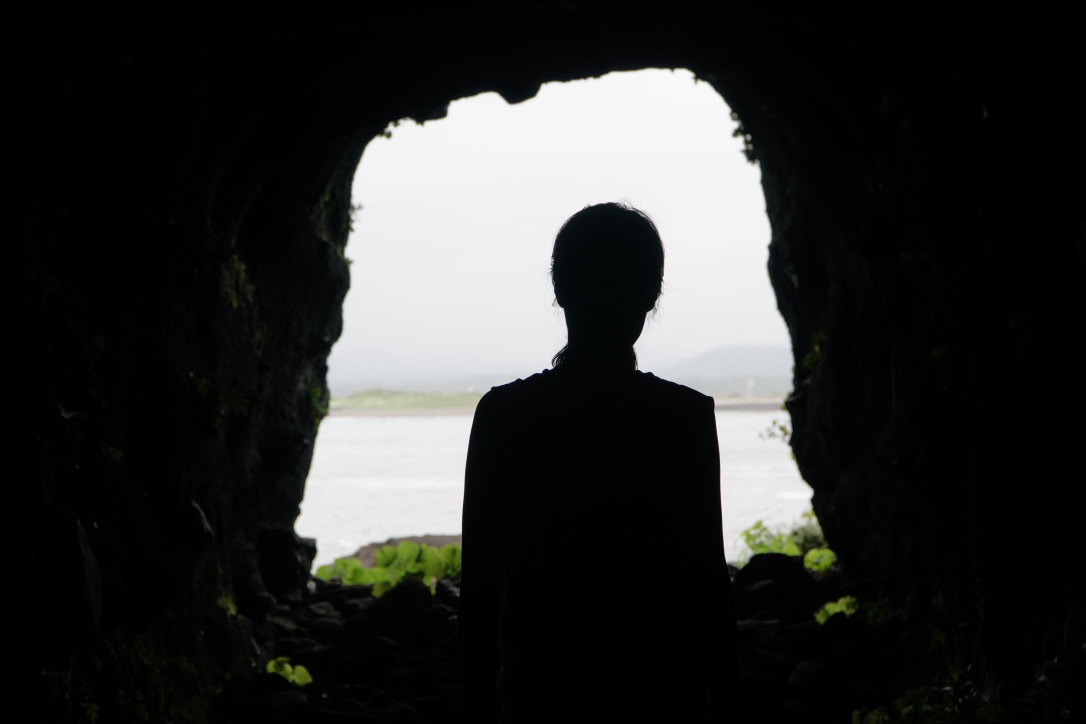
Just a side note about this list, I was able to do about eighty percent of everything on this list in a week stay in the summer during the hottest month without a rental car. Although my Jeju travel knowledge is more than most with some planning you can pack a lot into your trip.
This Jeju island blog is structured after a video I’ve made on the Full Belly Travels Youtube channel.
1. HOTELS & ACCOMMODATIONS
Let’s start with the necessities. You could stay at a hostel or a guest house as they call them in South Korea. But I highly recommend getting a hotel or an Air BnB on the beach.
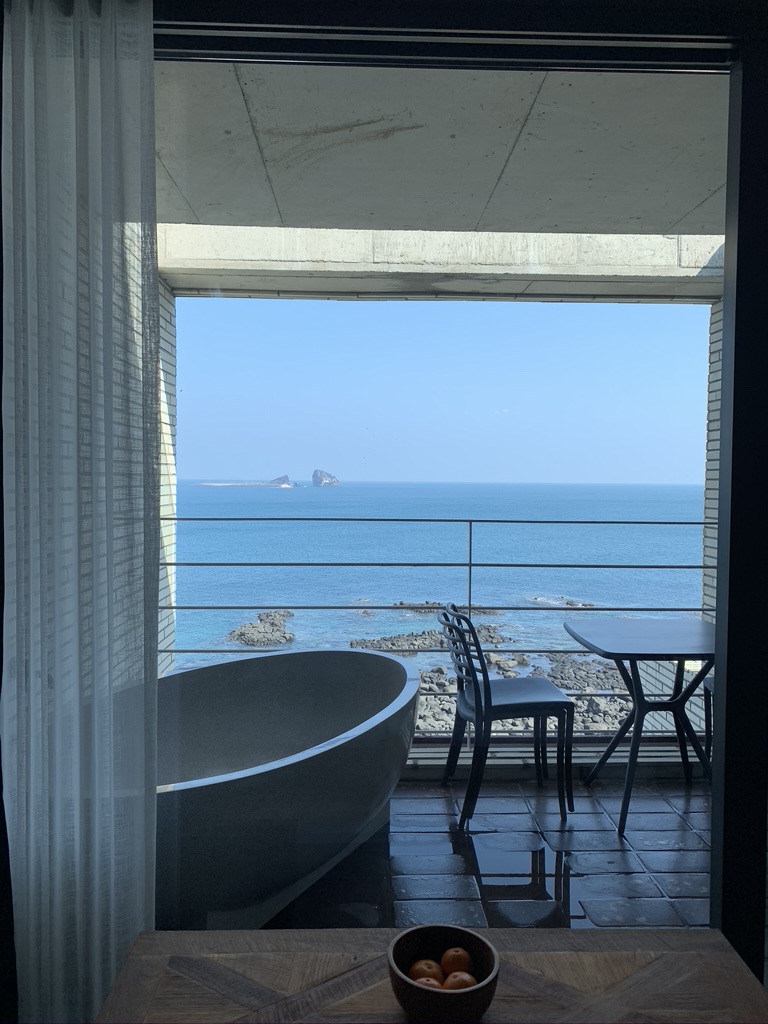
Jeju Island had an explosion of Chinese tourism and investment in the past and is unfortunately left with an excess of hotels. Although there is lots tourism, there isn’t as much with the Korean travel ban on Chinese tourists. This has left a lot of hotels with lots of vacancy and cheaper prices for very nice accommodations in prime locations. There are so many new, clean and high end hotels and even resorts for around $50-150.
2. STONE HOUSE STAY
Jeju Island is covered with black volcanic rocks. The native people of the island have utilized these rocks for building for ages. You can see black rock walls and small buildings made with black rocks all over the island. It’s one of Jeju’s signature characteristics.

Some people have converted these small buildings into places for tourists to stay. Staying in one of these traditional stone houses (a borum) is truly a unique Jeju experience. We found one that we stayed in on Air BnB. The house was an old farm house converted into an AirBNB in the countryside. It was super cozy, relaxing and had a unique interior. You can usually find them away from the touristy sites. This option is a super nice way to just relax away from the crowds of people by the beaches.
3. GOGI GUKSU
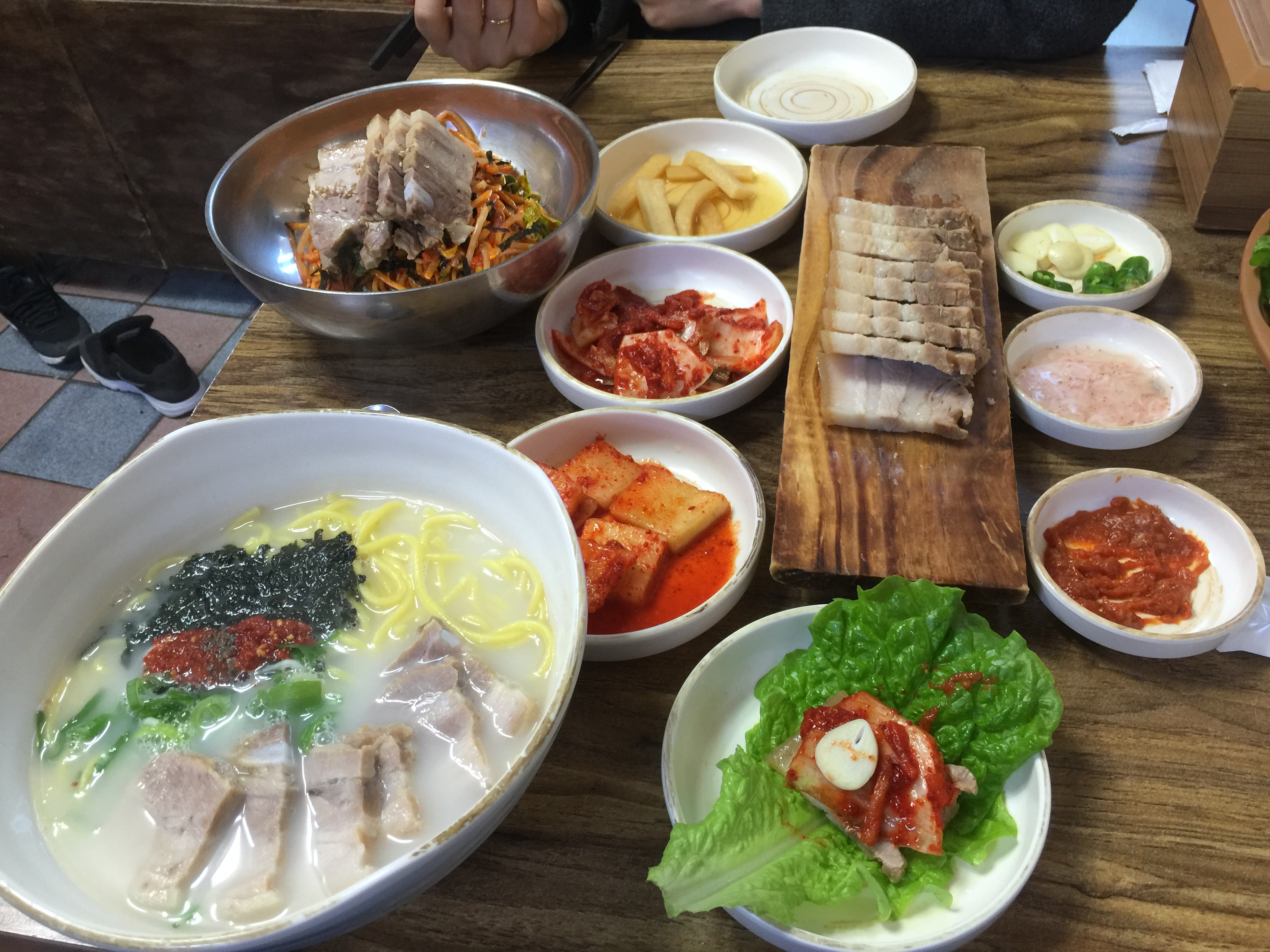
Gogi guksu restaurants will also serve steamed pork for wraps and bibim guksu, a spicy sauced noodle dish with no soup broth.
One local dish on Jeju that I fell in love with right away was gogi guksu. It’s a noodle soup with a milky white pork broth. Then sliced fatty pork is placed on top of the noodles with possibly some julienned carrots, seaweed flakes, ground pepper powder and green onions. When you receive your bowl of goodness you can add more red pepper powder, seaweed flakes and sometimes ground black pepper to your taste. I’ve had countless bowls of these noodles on my stay on the island. It’s a great meal to fill up on at a cheap price. There are so many gogi guksu shops all around the island. But many of them are easily found in Jeju-si and Seogwipo.
Here are some gogi guksu locations in Jejusi that I highly recommend:
Jamae Noodles(자매국수), Guksu Madang(국수마당), Golmak Sikdang(골막식당)
4. KOREAN BBQ IN JEJU
Jeju is known for its black pig. These pigs are said to produce very high quality pork. The meat is commonly cooked in the Korean BBQ style on a grill or flat top grill. So many tourists hear about the delicious pork from word of mouth or research. When your’e on vacation it may be nice to spend the extra money for the black pork as a nice treat.
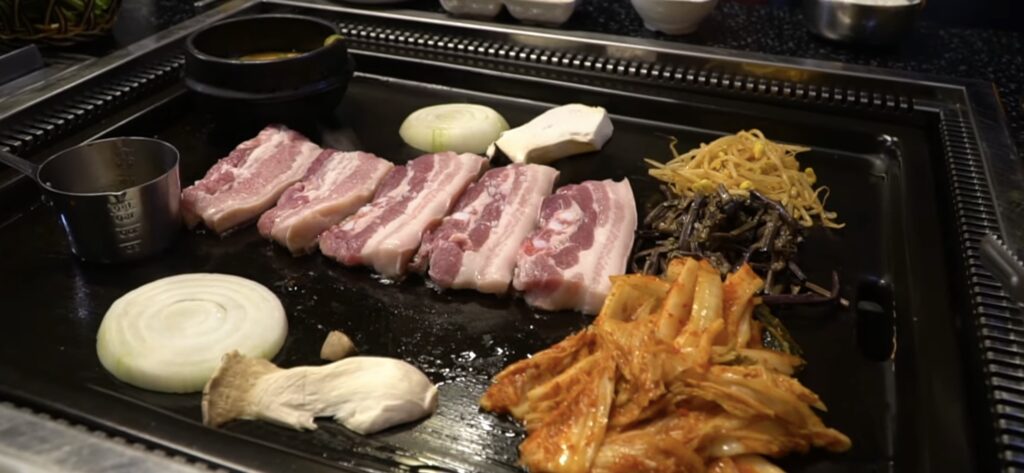
Most places will sell “normal” pork as well for the people on a budget.
But the regular Jeju pork BBQ experience is also delicious. Some may say they can’t notice the taste difference or validate the huge price markup. But I can say that Korean BBQ is the best on Jeju Island. Grilled meat with an alcohol of your choice is meal thats hard to beat on vacation or any Friday night. Every place does it a little differently with grilled vegetables or herbs, different banchan (side dishes), and grill styles. It’s an absolute must have meal when traveling to Jeju Island.
Some BBQ locations in Jeju Island that I highly recommend:
Seongsanilchulbong area: Dondabal (돈다발)
Hyeopjae Beach area: Hyeopjae the Kkot pork (협재더꽃돈)
5. DONGMUN MARKET
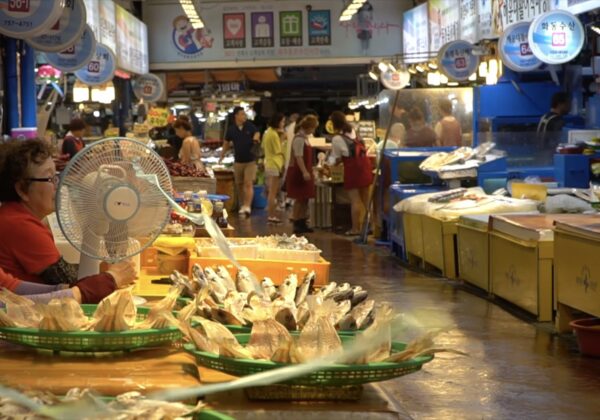
Since the island is surrounded with waters rich with sea life, Dongmun Market is the main place of distribution on the northside of the island for seafood. There are vast amounts of fish, squid, and shellfish caught daily around the island and this market is the best place to buy it. It’s also an amazing place to wander and get lunch or dinner. The market doesn’t only have seafood for sale. They also have street food stalls and restaurants that sell seafood and other land animal foods. And recently a whole different street food market has popped up in the last few years. It opens at 6/7 p.m. until 11 and it has countless changing street food options.
Map Location – Dongmun Market: Jejusi.
6. WOLJEONG RI BEACH
One beach that has become more and more popular in the last five or so years is Woljeong Ri. It’s absolutely a hidden gem on Jeju Island. The beach is protected by a harbor that makes the water calm and perfect for swimming. The waters are a beautiful turquoise and shallow for a long distances. You can sometimes see surfers when the waters aren’t so calm. The beach has a road that runs along it and facing the beach is a long row of cafes, restaurants and some small boutique shops. Other than the usual beach activities like swimming and sun bathing, one common thing to do at this beach is to chill at the cafes and enjoy the views of the peaceful water.

Map Location – Woljeong Ri Beach
7. HAMDEOK BEACH
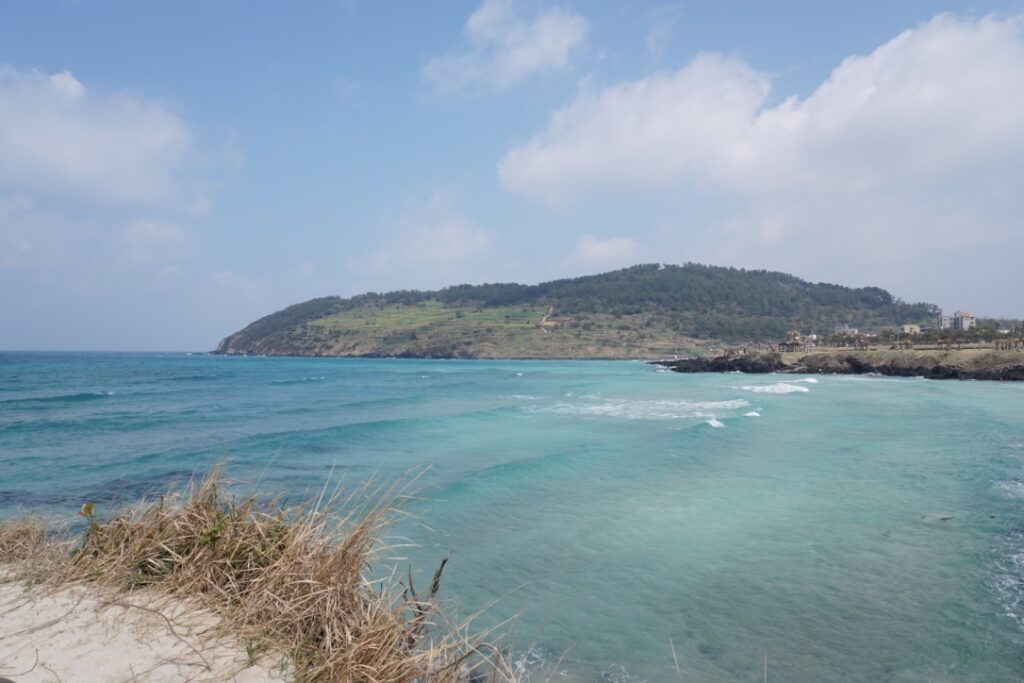
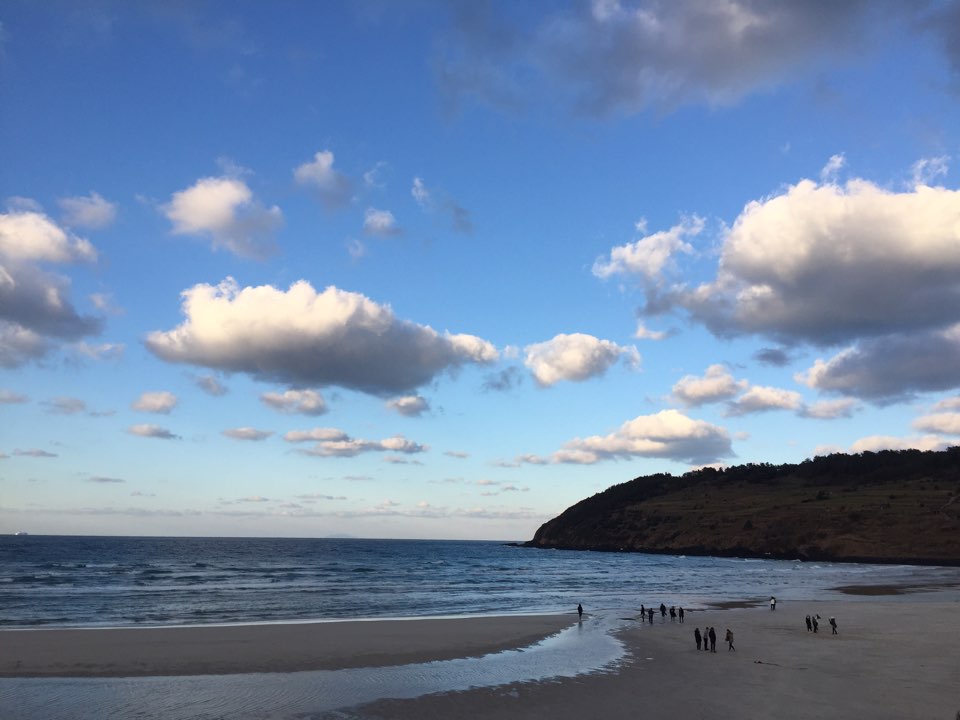
Hamdeok beach is the first beach that I fell in love with on Jeju Island. The beach has a gorgeous view of an oreum on the east side that you can easily hike. From the top of the oreum you can enjoy a view of the whole beach area. There are also multiple beach areas depending on the tide. It also gets super packed in the summer months with festivals and it’s the closest beach to Jeju City. Come any time outside of June to August to avoid these crowds and have the beach to yourself.
Map Location – Hamdeok Beach.
8. CAFES
On Jeju Island, there are probably hundreds of amazing cafes. Most have great views and special coffee drinks. Some specialize on single origin coffee beans. Some specialize on fresh roasting or baked sweet treats. And some just make cute and instagramable deserts and coffees for you to post on social media. I didn’t really get interested in coffee until I moved to Jeju. There are so many cafes that have a super chill vibe and are great relaxing places to read, talk, listen to music or do whatever. If you’re here on Jeju to chill then these are the places to be for that. Personally, I go to them in between meals to wait for the next meal, but that’s me. Finding a quiet cafe next to the beach preferably with a view of the sea is what I look for in a Jeju cafe.
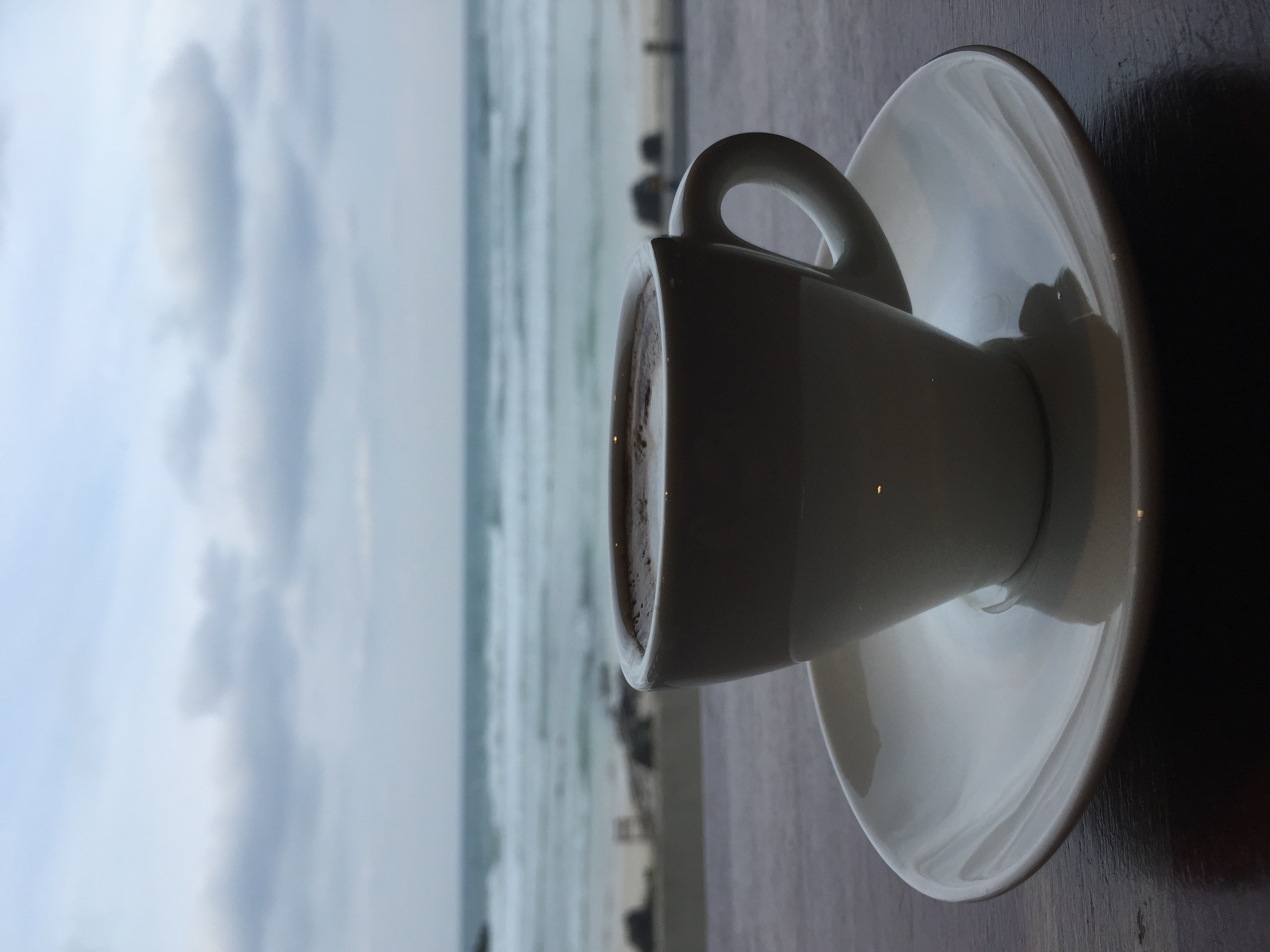
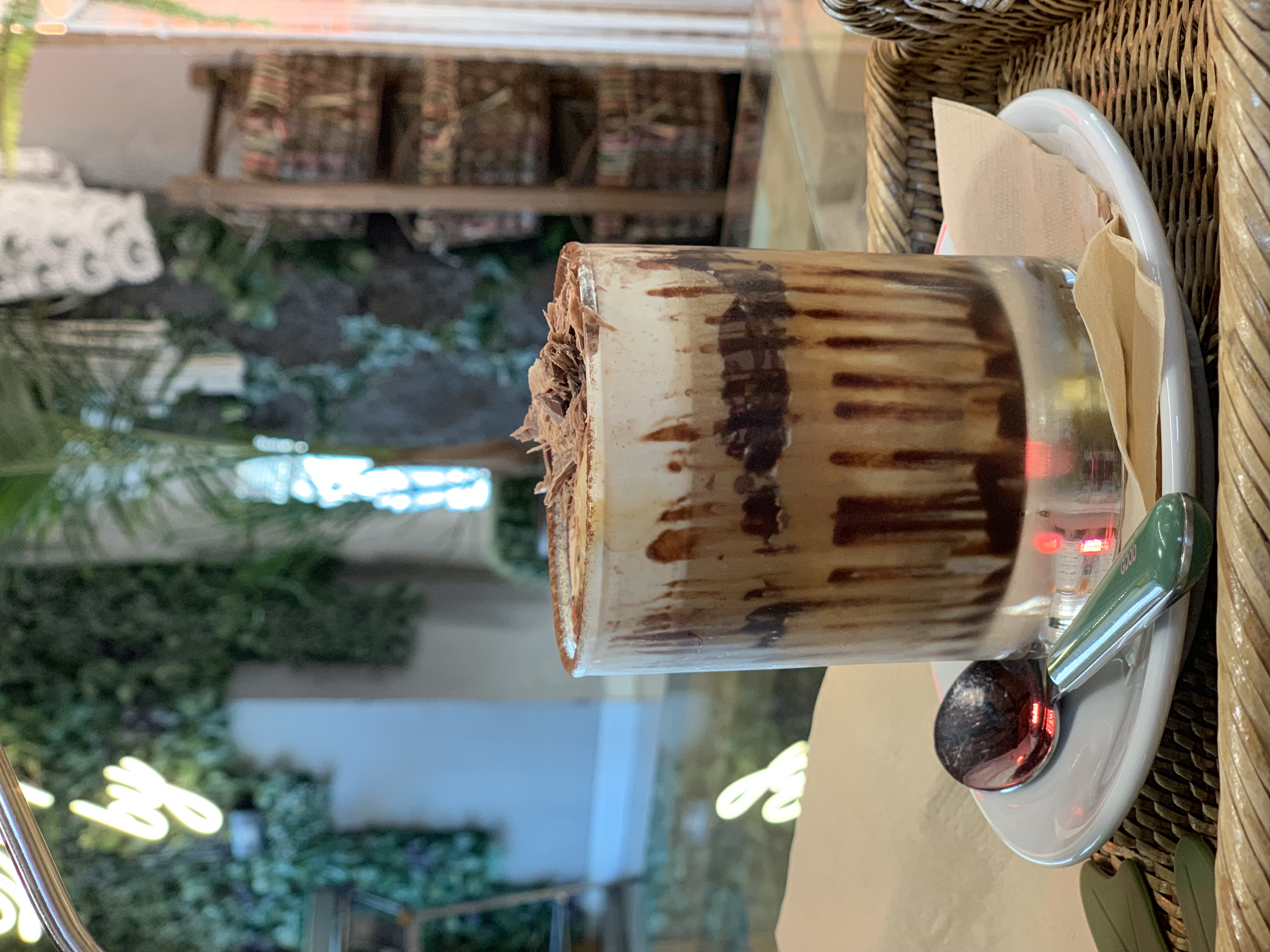
Map Location – Suma (수마)
9. MAKERAL KIMCHI STEW
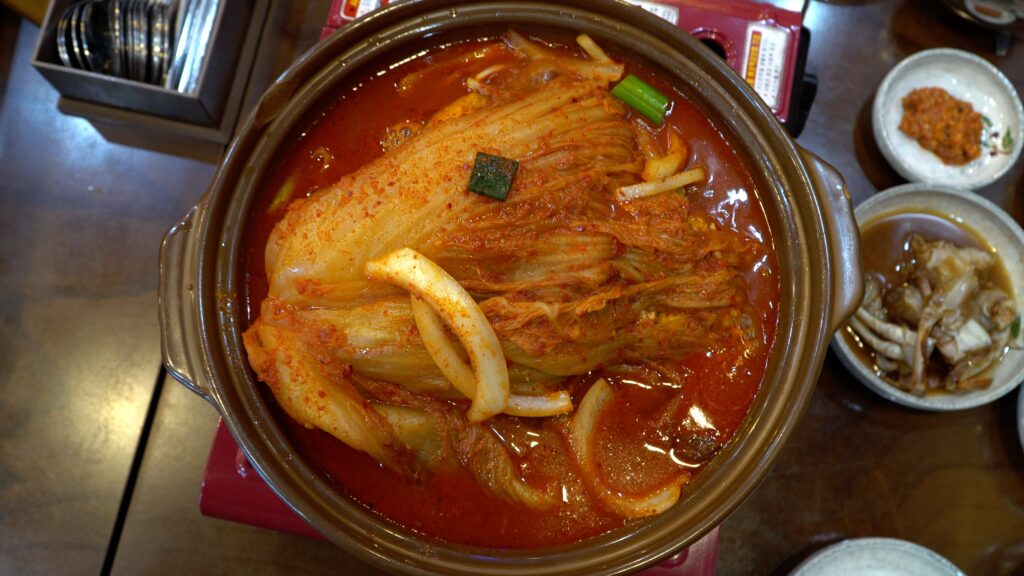
Let’s get back to some more dining options. This seafood dish totally surprised me. It’s stewed mackerel with aged kimchi. Fish stew isn’t something that I grew up with in America but this was super flavorful from stewing in the kimchi juices.
You can eat the fish alone with rice or like samgyeobsal with green leaves. The best location is located in Aewol at 바닷속고등어쌈밥. It also comes with a fermented soy sauce crab side dish at this place. Get outside your comfort zone and try something that you won’t forget. You won’t regret it.
Map Location – Badasok Mackerel Ssambab (바닷속고등어쌈밥)
10. HANDAM COASTAL WALK

Blackstone beaches and shores are common in Jeju, but this rolling walk along the bottom of a cliffed area is dramatic and gorgeous. The 20 to 30 minute walk leads you to Gwakji Beach, and comes from the west end end of Aewol. If you come from Aewol’s main cafe area and have coffee or lunch there and go on this walk, then you’ll end up at a gorgeous beach called Gwakji. This is a rough plan for an amazingly day that you could spend at a gorgeous area with a unique coastal line.
Map Location – Handam Coastal Walk (한담해안산책로)
11. HYEOPJAE BEACH
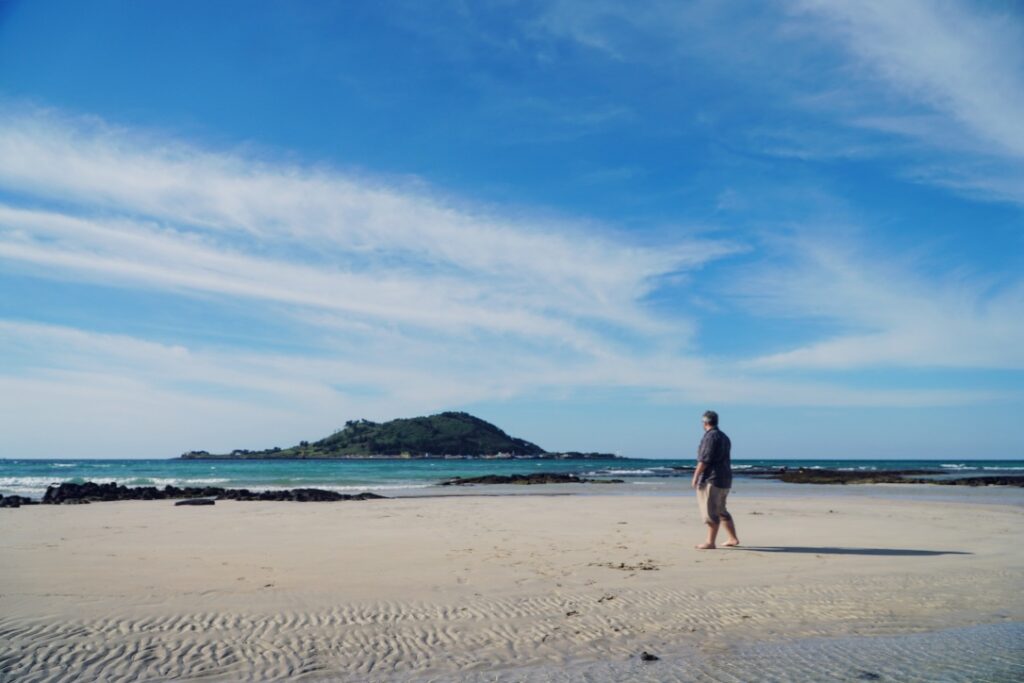
Hyeopjae Beach is Instagram heaven. The beach has clean golden sands with pristine turquoise waters and has a spectacular view of an island in the distance. It’s arguably one of the most beautiful beaches on the island. The multiple areas along the beach are great to explore for a day trip. It’s a bit far from Jeju city but still gets busy in the summer’s peak season. There aren’t many hotels and AirBNB accommodation options. So what is available is a bit pricey and slightly limited for views. So consider a day trip there if you don’t decide to stay overnight in the area.
Map Location – Hyeopjae Beach (협재해변)
12. BIYANGDO
This little island is the very picturesque island that you see on shore of Hyeopjae beach (#11 of this list). Biyangdo means “the island that flew”. It’s tiny and was created by a volcanic eruption one thousand years ago. You can take a short fifteen minute ferry ride from Hallim Port to get there, and it has lovely views of the big Island (Jeju) on the way there. The walk around the island only takes around one or two hours depending on pace and the amount of pictures taken. Biyangdo has around 100 inhabitants and tourists come here for short hiking trips, fishing and photography. There may be a few cafes you could find and a few restaurants as well. The island has an abundance of sea snails on the coastal waters and that’s what you’ll find on the menu in the restaurants.
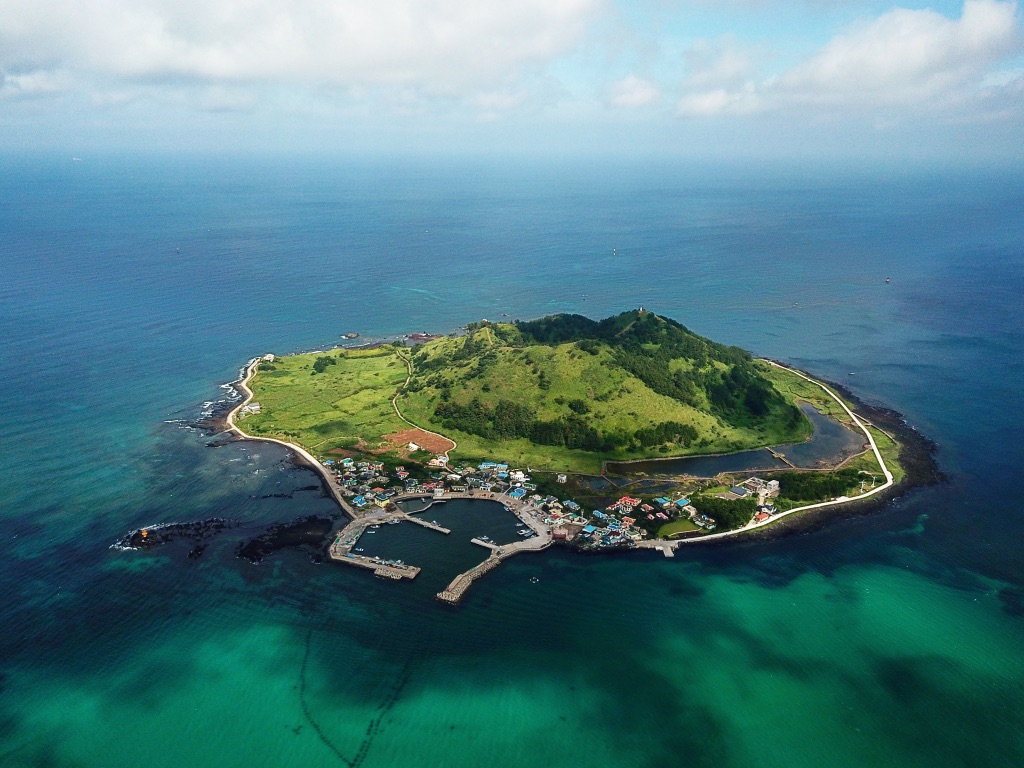
Aerial view of Biyangdo. It also is an extinct volcano.
Map Location – Biyangdo (비양도)
13. TRY SOME DIFFERENT SEAFOOD DISHES
Jeju ,like most islands, is a seafood island. It has miles and miles of shorelines, so a large source of its economy is seafood and seafood production. If you end up going to Biyangdo (#12 on the list) and you’re looking for something to eat, you might realize that this island’s specialty is bomal 보말(sea-nails). So the restaurants on that island will serve snails in most of the dishes. Be adventurous and give them a try. You never know when you’ll be on that island or have the chance again. Other seafood that is easy to find is freshly caught shellfish at Haneyo houses, galchi (a long silver fish with some gnarly teeth), and mackerel (cooked and raw).

Map Location – Sabang Palbang (사방팔방)
14. EONGAL COASTAL TRAIL

This area is a hidden gem on Jeju island’s coast. It’s not known or visited by many tourists therefore you won’t find many hotels near this location. This gorgeous location is a little fishing port nestled next to a cliff area. Visitors that come will be astonished by the view of a cluster of islands very close to the shore. The coast has a path along the shore for biking and walking. You’ll also find older ladies hanging, drying and selling squid. This location is ideal for scenic walks and catching the sunset since it’s the most western point on the island.
Map Location – Eongal Costal Trail (엉알해안산책로)
15. YEONG MEORI COAST
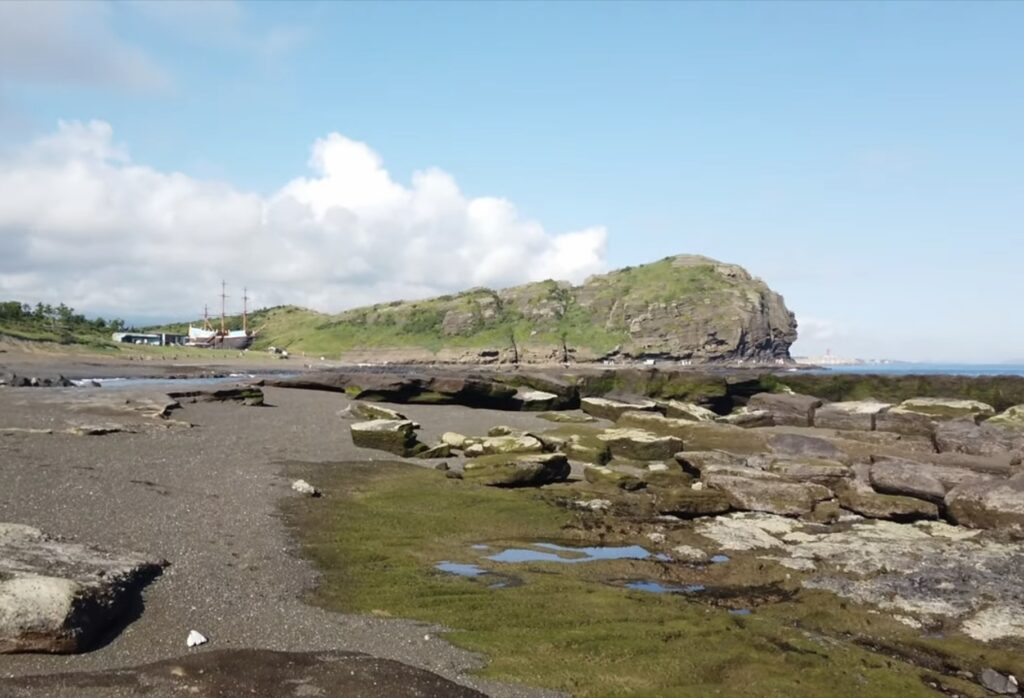
Yongmeori coast is a protruding rocky outcropping near Sangbangsan with sandstone formations. You’ll find entry to this area near a landmark on the shoreline that can’t be missed. When you travel along this coast you’ll see what looks like an old beached sailing ship. The ship is actually a museum dedicated to an explorer (Hendrick Hamel) that gave his accounts of the Joseon era in Korea in 1653-1666. Although Jeju’s black lava rocks are easy to find, sandstone formations like Yeong meori are rare on the island. A small fee of 2,000 won to see these amazing views isn’t bad at all for access to this part of the island. While there you can enjoy a coastal walk on layered rock formations and see ajummas (older ladies) selling fresh shellfish that you can eat right there on the coast on short plastic stools. It’s a great daytime activity that you can do in the south of the island . But this area may be closed sometimes due to weather and high tides.
Map Location – Yongmeori coast (용머리해안)
16. OLLE TRAILS
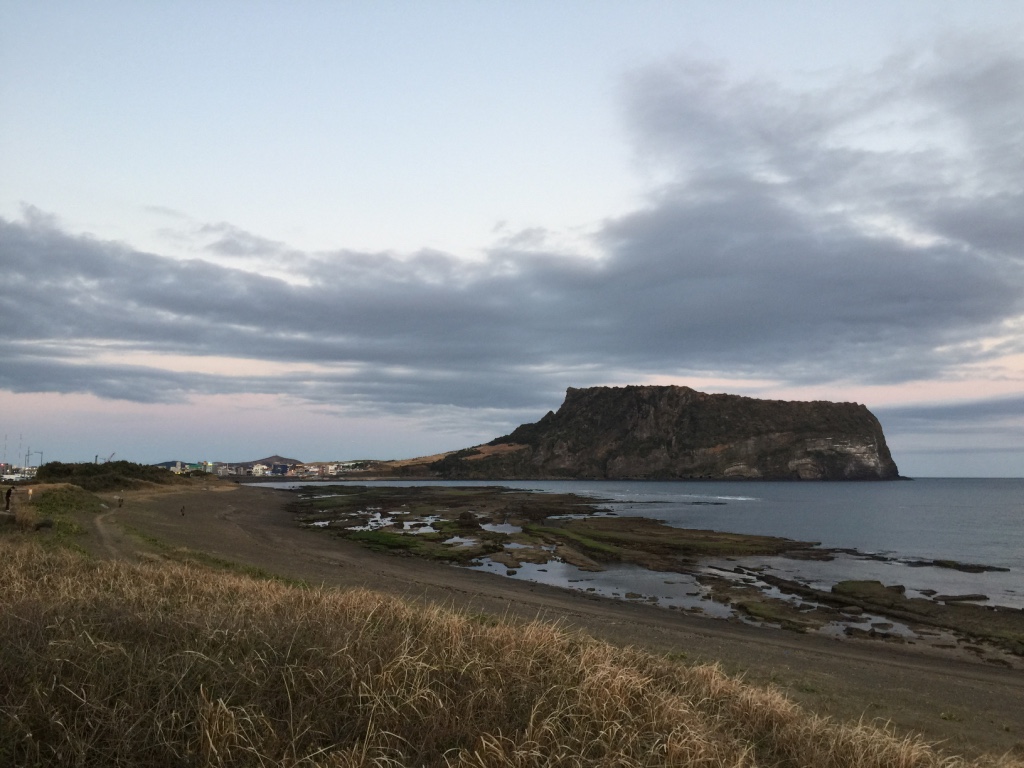
If your’e looking for a way to enjoy nature in Korea and exercise then an Olle trail is your answer. Olle trails are a circuit of 21 connecting trails and 5 sub-routes that mostly run along the coastline of Jeju Island. The trail’s creation was inspired by the Camino de Santiago pilgrimage route in Spain. Each trail you go through has diverse types of landscapes to enjoy. You will have a chance to see Jeju’s seaside coasts, farms, small villages, and forests. All the courses vary in difficulty and length, from one hour to eight. Each course is marked with ribbon trail markers to keep hikers on path. Do your own research in the area you want to visit to find one of these trails. Or you might see the trails markers while hiking anyways.
Map Location – Olle trail (올레길)
17. YAKCHEONSA TEMPLE
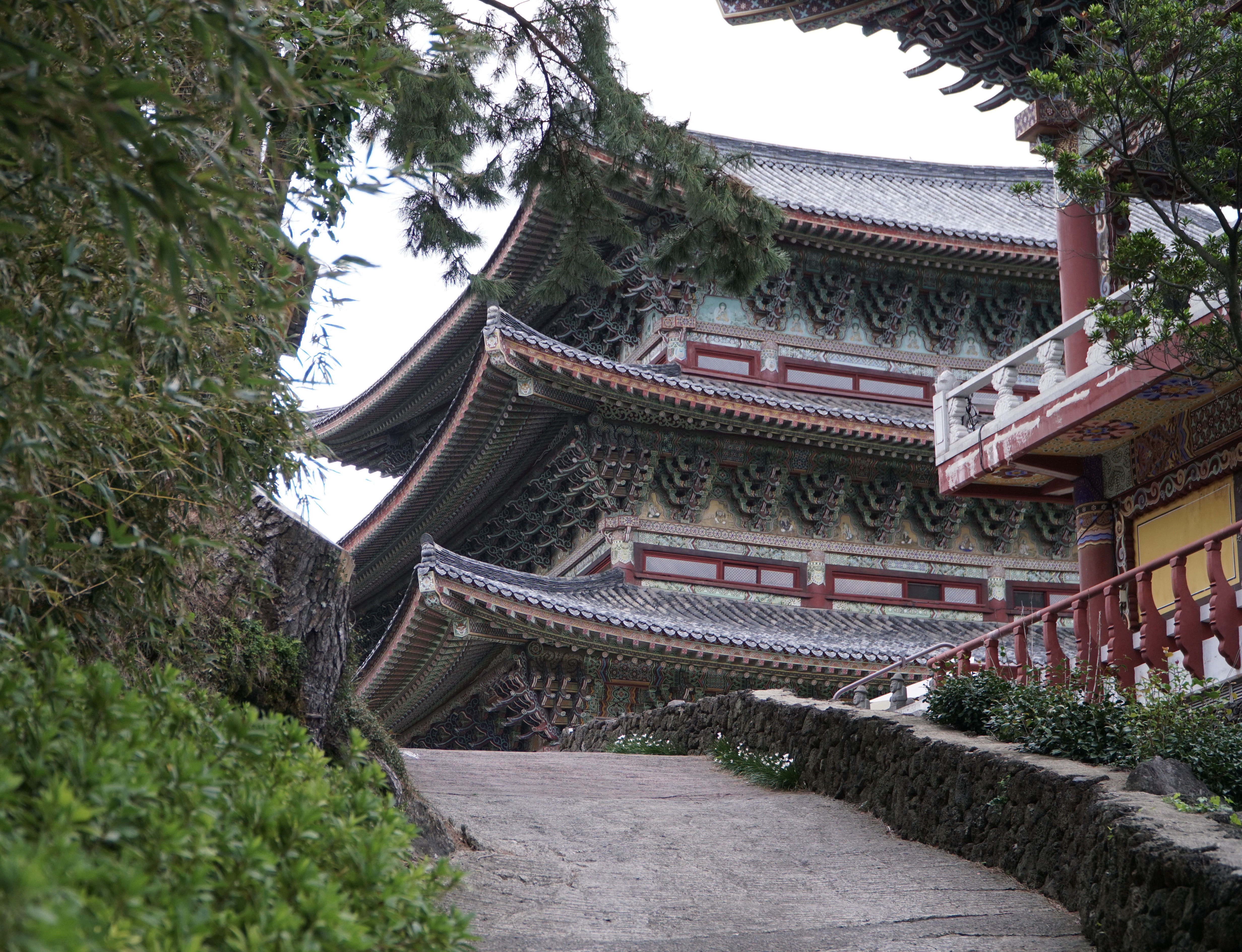
Yakcheonsa temple may look like an ancient temple, but it was built fairly recently. The temple location has a natural spring that flows all year round. The waters are said to have healing powers and this is the reason for building this religious structure at this location. Yakcheonsa is one of the largest buddhist temples in Asia. It also boasts three impressively large buddha statues in its three story pagoda with dragons wrapped around the pillars. All visitors are welcome to explore the cave in the back or inside the temple. Just remember to take off your shoes and be quiet and respectful.
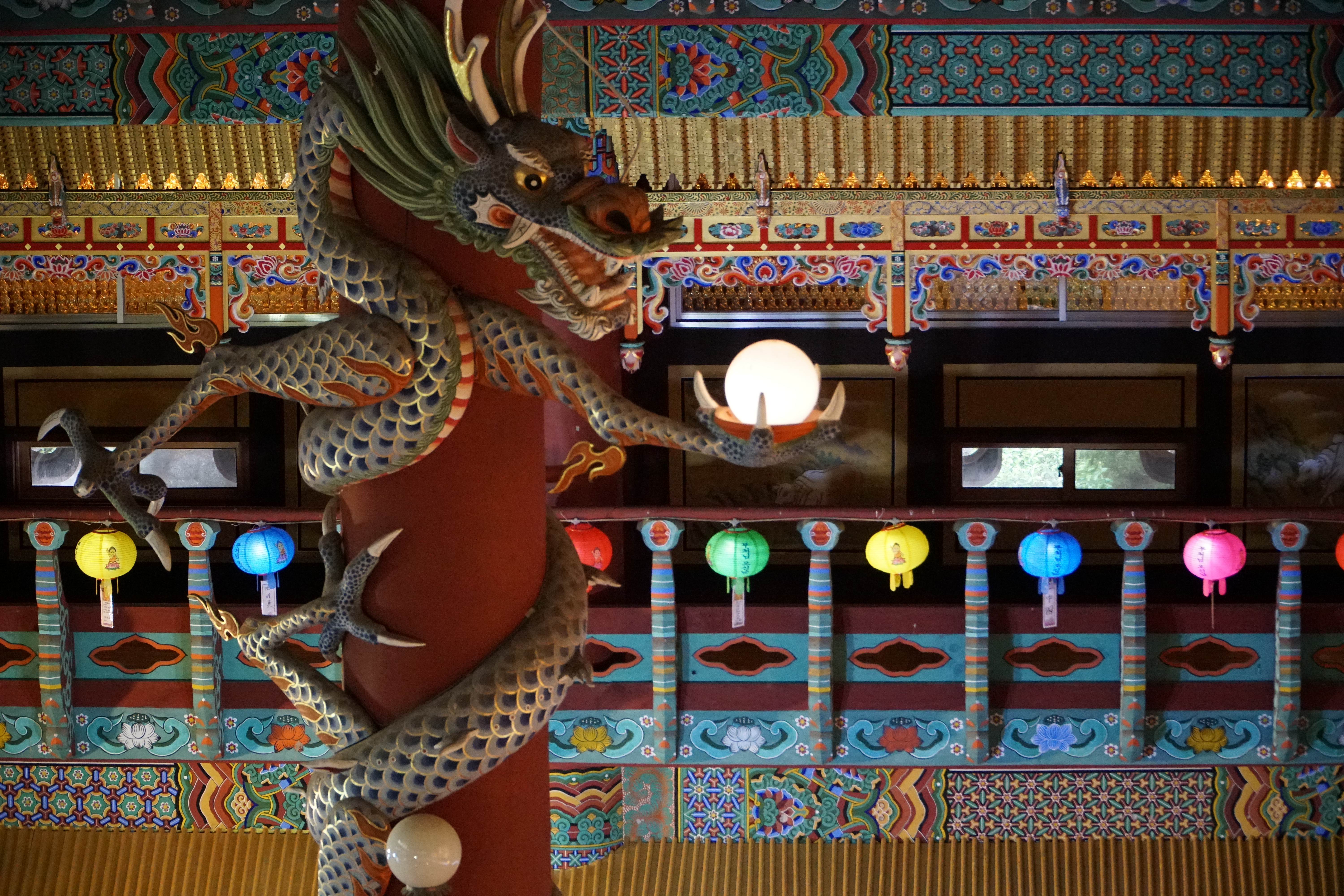
Map Location – Yakcheonsa temple (약천사)
18. YEOMIJI BOTANICAL GARDEN
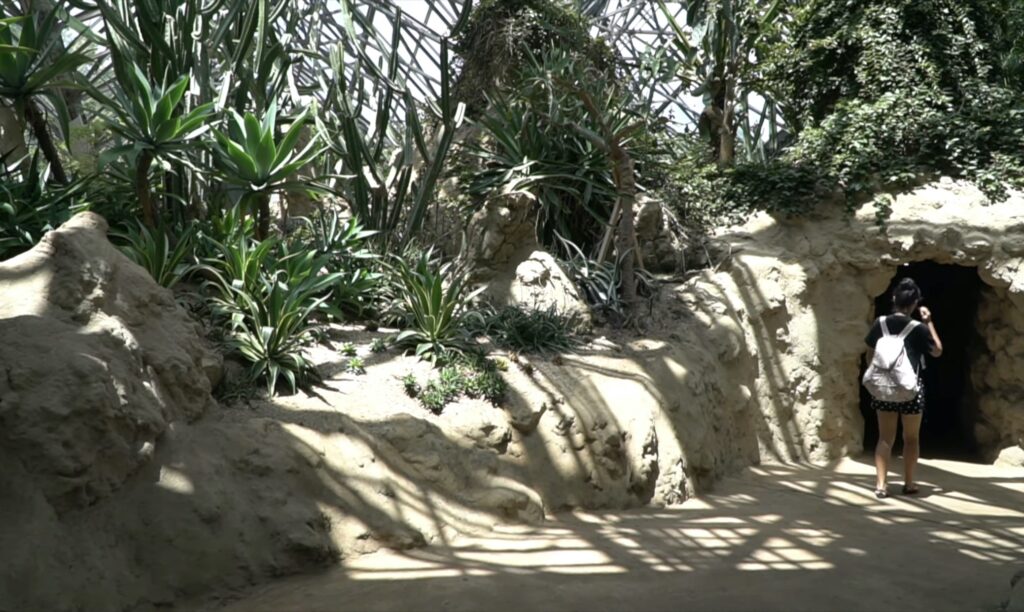
Yeomiji Botanical Garden is located in the Jungmun tourist complex. It used to be the largest botanical gardens in Asia. This place has an impressive glass structure with acres and acres of beautiful manicured gardens outside the greenhouse. They have exotic plants from all over the world along with native species of Korea. You could easily spend hours there walking around and having a picnic. Don’t forget to take the elevator to the top to see a beautiful view to the south of the island.
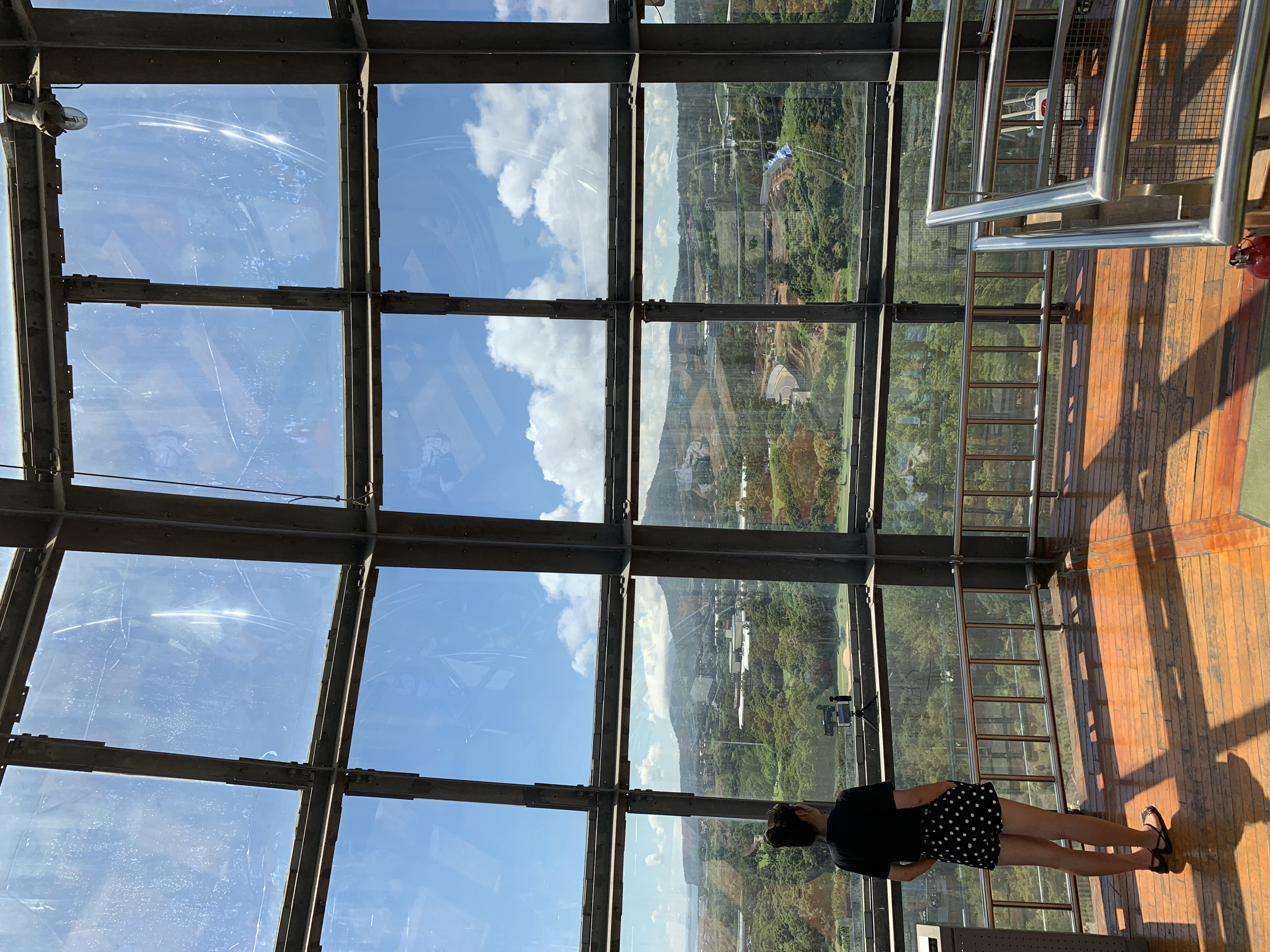
Map Location – Yeomiji Botanical Garden (여미지 식물원)
19. OLLE MARKET

Olle market is the biggest market in the south of the island and, of course, has seafood and other whole foods. But, this place is also packed with amazing street foods and restaurants. Street food is a must-have for all my happy days. And, this place delivers. One food that is super popular and requires a wait is Manong chicken.
Map Location – Olle market (올레시장)
20. GARLIC FRIED CHICKEN at OLLE MARKET – (Manong Chicken)
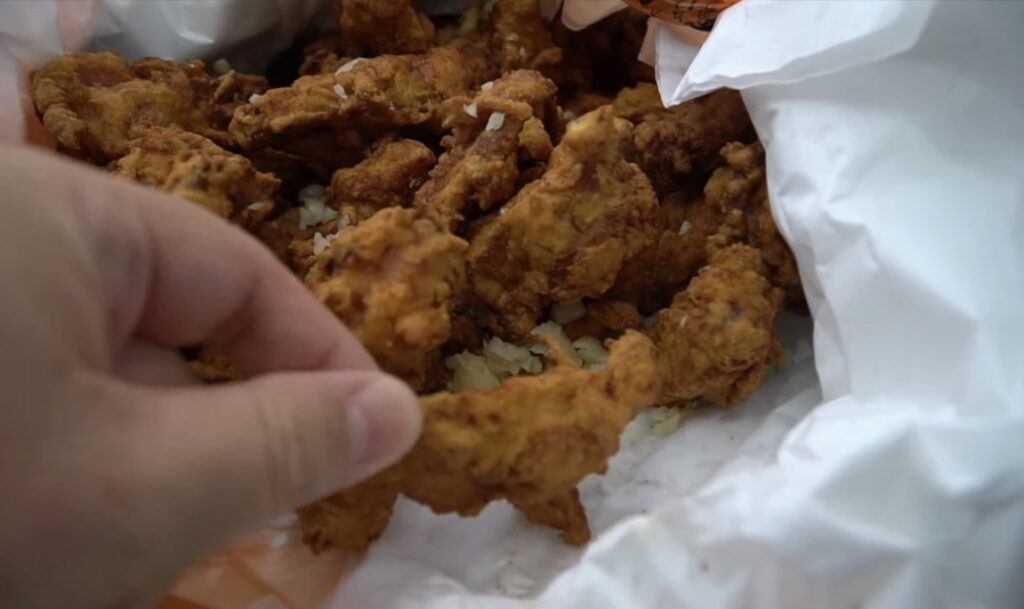
In Olle Market in Seogwipo their is a unique fried chicken, Manong Chicken. This popular fried chicken is very aromatic with heavy garlic scents, and they cut it off the bone to get extra crispy bits of chicken. The chicken is also breaded and loads of fresh garlic is thrown on top. If you don’t go there early enough they might run out. Also when you get there early enough you still have to wait for the chicken. You pay and are told to come back at a certain time to pick up that steaming back of fried chicken. It’s super tasty and cravable. The very fragrant garlic pairs nicely with the cubed radish. It tastes like no other fried chicken I’ve had before. 마농치킨 is the spot to get this amazing chicken.
Map Location – Manong Chicken (마농치킨)
21. MARADO
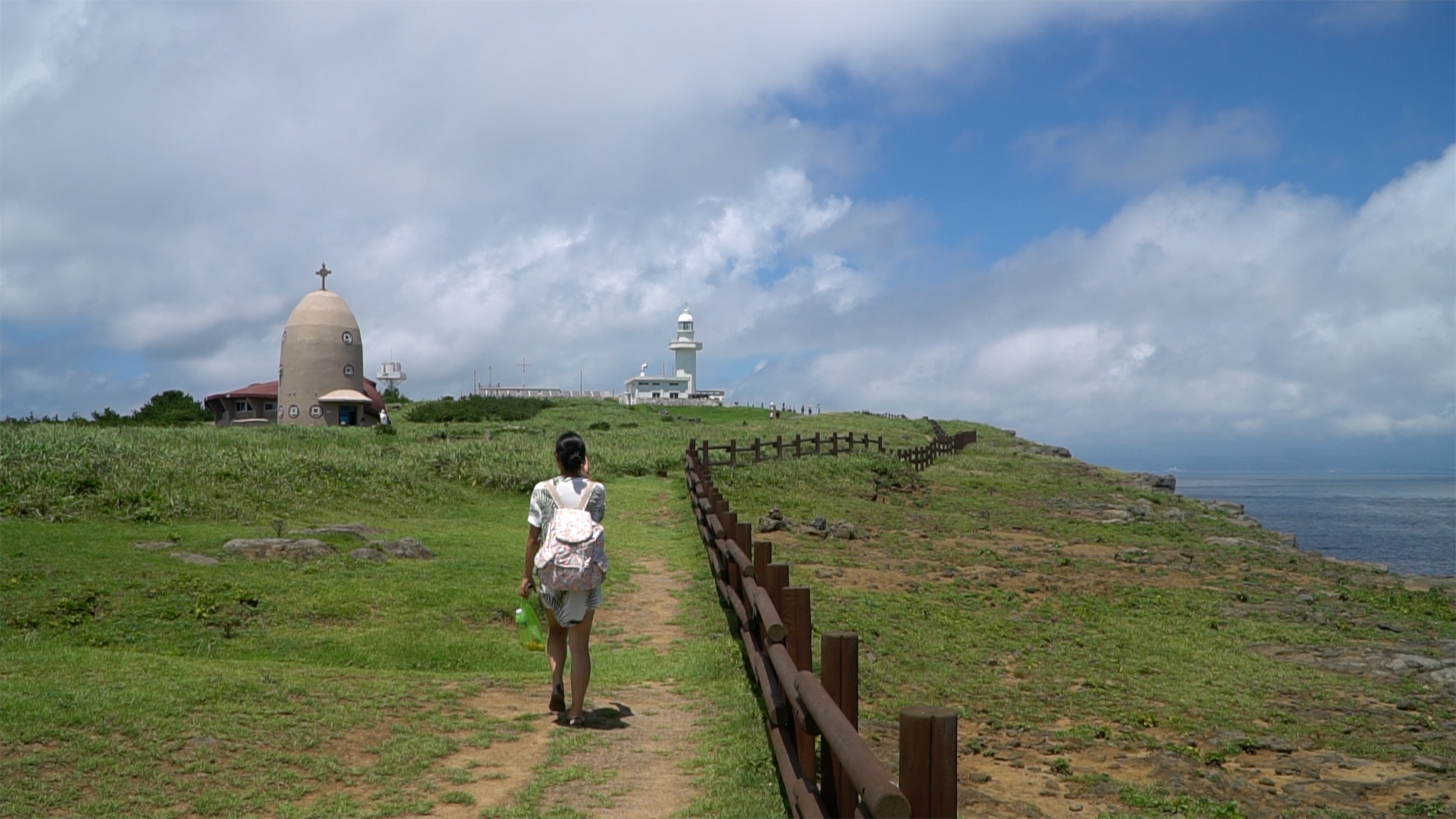
This is an island off of Jeju that takes around 40 minutes by ferry. It’s super fun to go island hopping and this is the most southern island in South Korea. This place is solar-powered and is popular for Jajangmyeon. There are a bunch of sites to see while circling around the island. It has a lighthouse, buddhist temple and a unique chapel. It’s a super unique place to explore for a day trip. You could easily spend 2 hours on the island in the morning or afternoon and be back to the main island for dinner.
Map Location – Marado (마라도)
22. SEONGSAN ILCHULBANG
Okay, so, I’ve saved the best places for last. So I’m happy you made it this far. Seongsan Ilchulbong is my favorite place in Jeju. It’s a super unique landscape that I love sharing with new visitors. It’s easy to spot Haenyeo (female free divers) there. There are two Haenyeo houses located on the north and south sides of this huge natural wonder. They serve freshly caught seafood right from the sea for sale for all. Most people visiting here pay the entry fee to the park and climb to the top of the peak to see the amazing views seen in the picture shown below. But there are so many other amazing views to be seen around this area of Jeju.

Map Location – Seongsan Ilchulbong (성산일출봉)
23. GALCHI
Seongsan Ilchulbang is a great area to find some locally caught seafood restaurants. I highly recommend trying a galchi feast. Galchi a long super shiny silver fish that is a white meat fish. It’s mild on the fish flavor and it’s super easy for a fish lover to enjoy. You can see these fish for sale at most seafood markets in Korea. They shine lights on the silver flesh to attract customers. A feast like this for around $80 came with a whole grilled fish, spicy galchi stew, spicy pork bulgogi and a table full of unlimited side dishes.
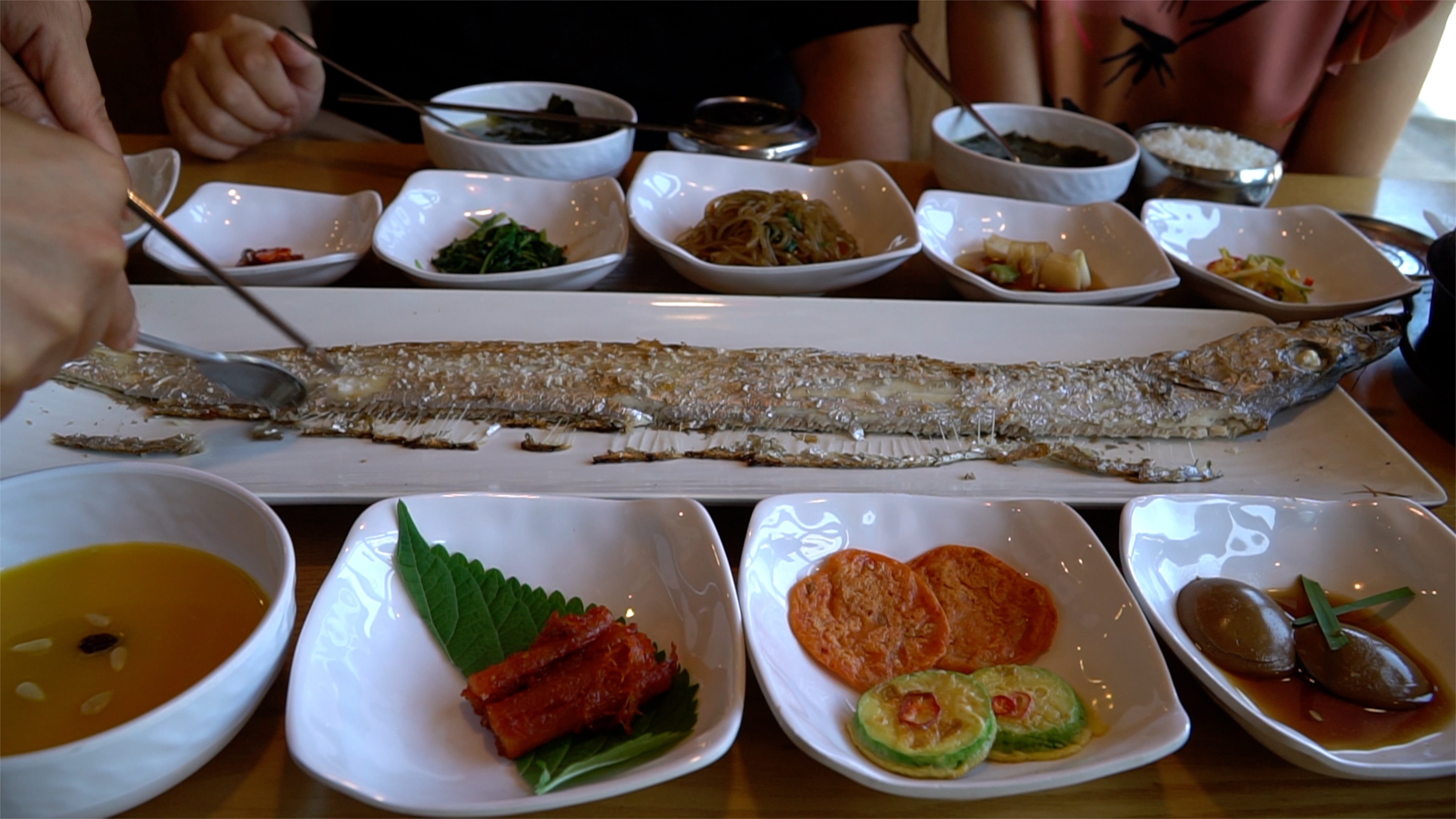
Map Location – Mohae Tonggalchi Brazier Grill (모해통갈치화덕구이)
24. UDO ISLAND
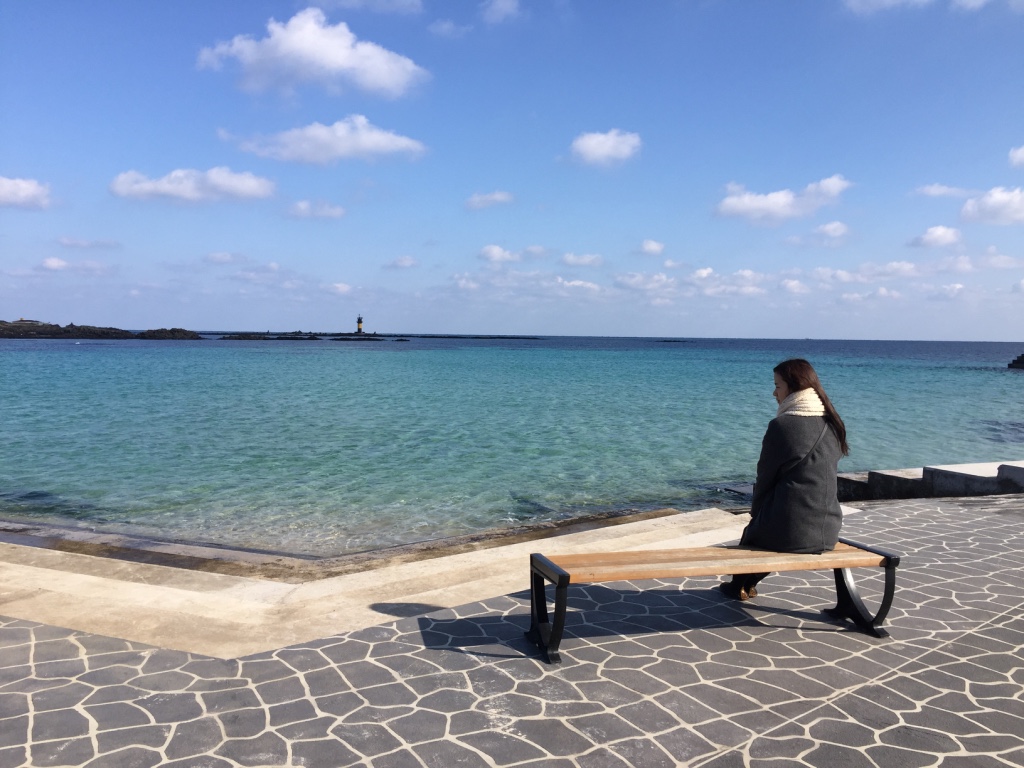
Lastly, is Udo island. It’s the biggest island off of Jeju. You have to take a scenic ferry ride to get there. Udo is super touristy and known for growing peanuts. I recommend going around the island on a rented electric tuktuk or a bike. It’s good old-fashioned fun riding around the island. Udo is covered with gorgeous beaches and has horseback riding. But, I don’t have a beach body and I’m allergic to horses, So, I like to eat all the peanut foods. Peanut food options are in abundance on the island. They have peanut ice cream, peanut noodles, peanut coffee, peanut burgers. It’s a super chill and relaxing island that you can enjoy some peace and quiet with amazing views.
Map Location – Udo island (우도)
25. EATING HORSE MEAT

If you watch the video that this blog is about then you’ll see Peanut mandu (dumplings) are the twenty fifth thing on the list. They are truly a unique version of mandu and are something nice to enjoy while on Udo Island. But the cafe that made them has closed. So I’ve replaced #25 with something that’s possibly controversial and a food that is only found in Jeju. Horse meat is outlawed to eat in some countries and a rare dining options in the places it isn’t banned. The Mongols breed horses in Jeju when they occupied the land. The island was suitable for raising horses. So horse meat has been eaten since those times. It’s a lean meat similar to the taste of beef. The meat is high in iron and some say it has a slightly sweet flavor to it. It’s one of those foods that you shouldn’t knock it until you try it.
Map Location – Maudon (마우돈)

This is great, so many nice places to visit. Can’t wait to see it. I will try a lot of it except for the horse meat, just can’t do it.